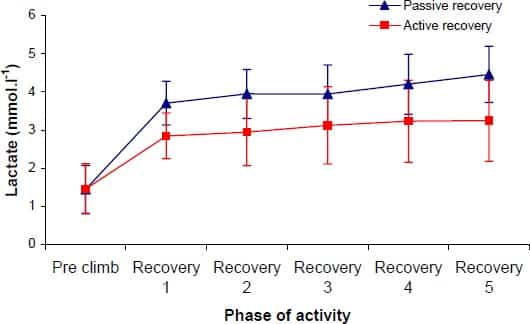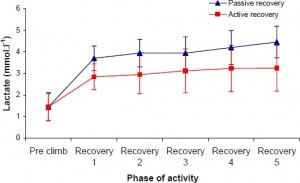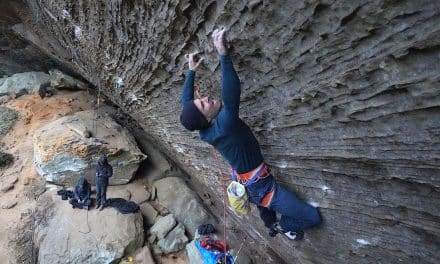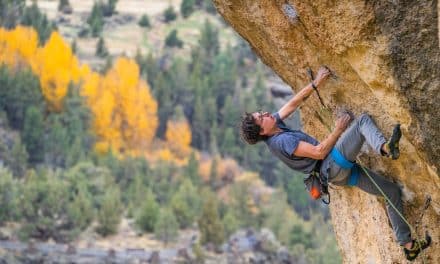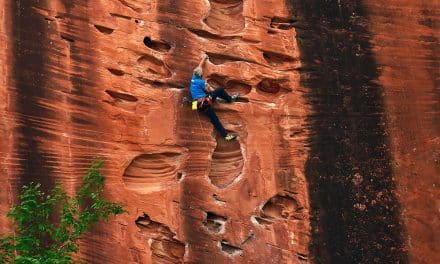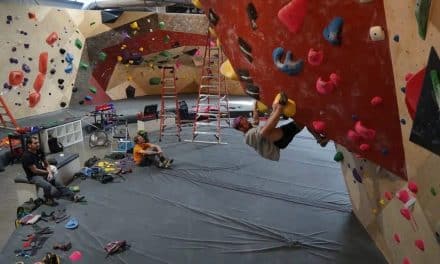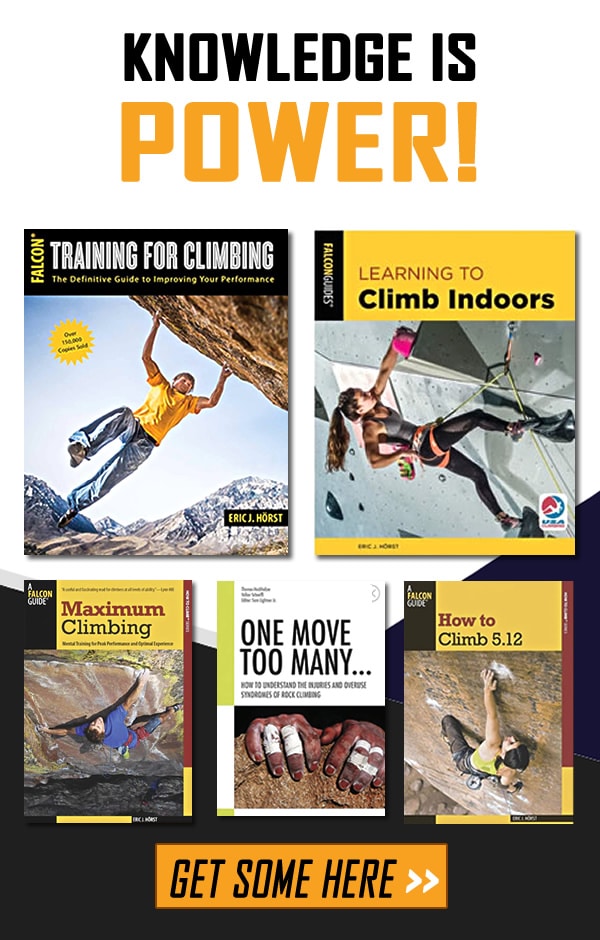Key Points & Practical Application:
- Compared with passive recovery, use of active recovery yielded faster recovery between bouts of high intensity climbing.
- Lactate concentrations and RPE (rating of perceived exertion) were lower after active recovery than after short periods of passion recovery.
- Concluding the active recovery period with a brief “refocusing passive phase” allowed heart rate to return to a similar level as in use of passive recovery.
- Use of walking as active recovery between bouts of hard bouldering or sport climbing appears to be a beneficial strategy for accelerating recovery, as the leg muscles metabolize lactate produced by the arms and torso during hard climbing.
Effects of Active Recovery on Lactate Concentration, Heart Rate and RPE in Climbing
Nick Draper, Ellis L. Bird, Ian Coleman and Chris Hodgson
Centre for Adventure Science Research, University of Chichester, Chichester, West Sussex, UK
Journal of Sports Science and Medicine (2006) 5, 97 – 105
ABSTRACT
The performance advantage of active rather than passive recovery during subsequent trials for repeated high intensity short-term exercise is well documented. Research findings suggest that shorter periods of active recovery, than traditionally employed, can be prescribed and still retain performance benefits over passive recoveries in successive exercise trials. The aim of this study was to examine the benefits of a short duration active recovery for repeat climbing trials. Ten recreational climbers volunteered for the study. In this randomly assigned crossover study each climber completed five two-minute climbing trails before a two minute active or passive recovery. This was followed by a one and a half minute passive refocusing period for all climbers before the subsequent climbing trial. Heart rate was monitored continuously, RPE immediately post climbing and fingertip capillary blood samples collected during each refocusing phase. There was a non-significant difference between active and passive recoveries for heart rate during climbing. After the active phase climbers had higher heart rates than when following the passive recovery protocol, however, by the end of the refocusing phase the active recovery protocol led to lower heart rates than for the entirely passive recovery. There was a significant difference between active and passive recovery conditions in lactate concentration (F(1,9) = 18.79, p = 0.002) and RPE (F(1,9) = 6.51, p = 0.031). Lactate concentration and RPE were lower across all five climbing trials for the active recovery protocol. After active recovery climbers started the next trial with a lower arterial lactate concentration than for a passive recovery and indicated lower RPE scores at the end of each climb. The refocusing period following active recovery allowed climbers heart rates to return to a lower level at the start of the next climb than for the passive recovery condition.

